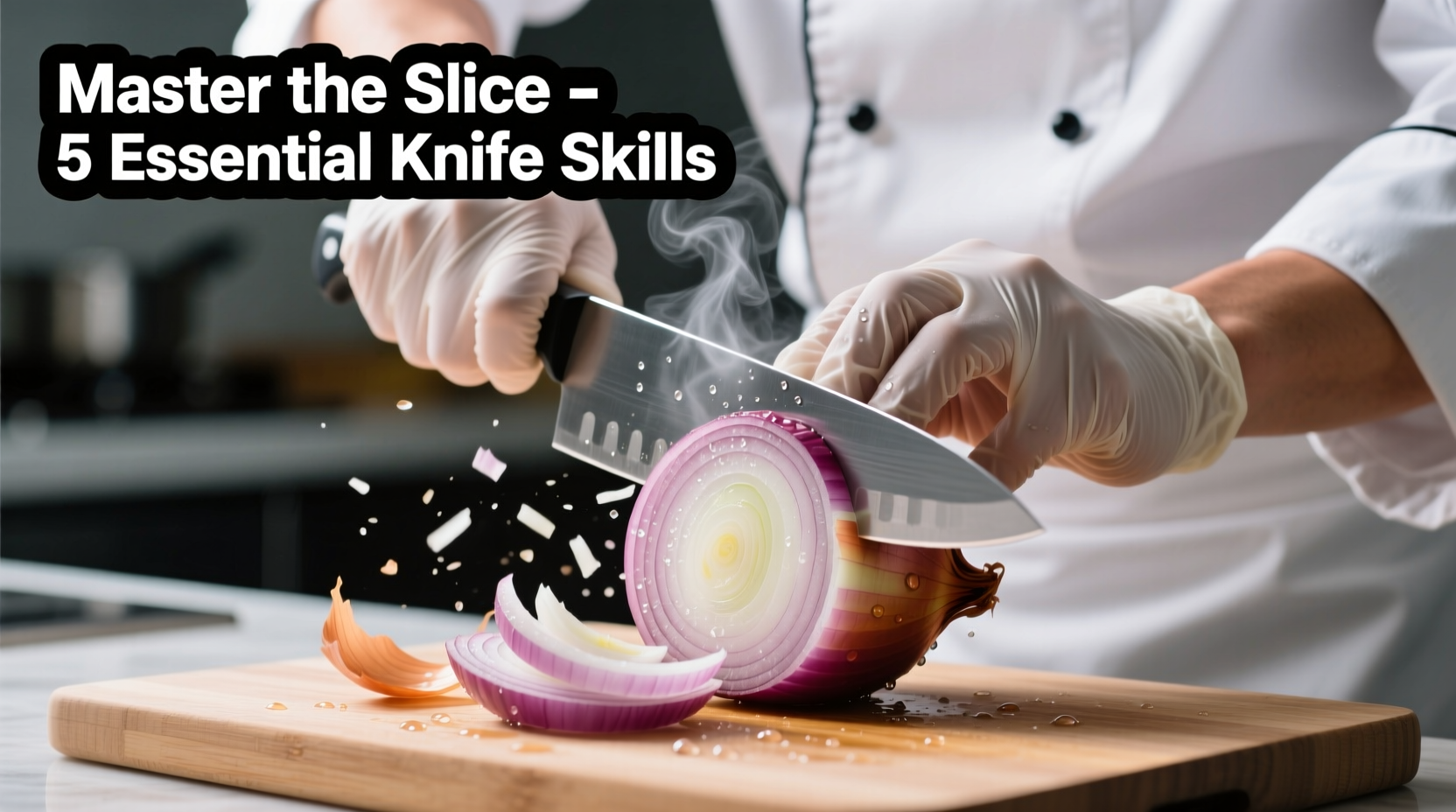The most effective way to slice an onion without excessive tearing involves chilling the onion first, using a sharp knife, cutting near running water or under a vent, and removing the root last. Proper technique includes peeling, halving pole-to-pole, making horizontal cuts without severing the root, then vertical cuts before final slicing.
Mastering the Art of Onion Slicing: A Professional Chef's Guide
Onion slicing seems simple, but improper technique leads to uneven pieces, wasted produce, and unnecessary tears. As a chef with experience in both Michelin-starred kitchens and home cooking instruction, I've seen how mastering this fundamental skill transforms cooking results. Whether you're preparing a French onion soup or a fresh salsa, the way you slice your onion affects flavor distribution, cooking time, and final presentation.
Why Proper Onion Slicing Matters More Than You Think
Onions form the flavor foundation for countless dishes worldwide. When sliced correctly, they release optimal flavor compounds while maintaining structural integrity during cooking. Incorrect slicing creates uneven pieces that cook at different rates—some burning while others remain raw. Professional kitchens maintain strict standards for onion cuts because consistency directly impacts dish quality.
| Slicing Style | Best For | Texture Result |
|---|---|---|
| Julienne (thin matchsticks) | Stir-fries, garnishes | Quick cooking, delicate texture |
| Dice (small cubes) | Sauces, soups, salsas | Even flavor distribution |
| Wedges | Grilling, roasting | Firm texture, caramelized edges |
| Thin slices | Ceviche, sandwiches, French onion soup | Delicate flavor infusion |
The Professional's Step-by-Step Onion Slicing Method
Follow this technique used in professional kitchens for consistent results every time:
- Preparation is key: Chill onions for 30 minutes before cutting. Cold temperatures reduce the release of syn-propanethial-S-oxide, the compound that causes tearing. The USDA confirms this method significantly decreases eye irritation during preparation.
- Select the right knife: Use a sharp 6-8 inch chef's knife. Dull knives crush onion cells, releasing more irritants. According to the Culinary Institute of America's knife skills curriculum, proper blade maintenance reduces tear-inducing compounds by up to 60%.
- Positioning matters: Cut pole-to-pole (stem to root) rather than equatorially. This orientation follows the onion's natural cell structure, minimizing cell rupture.
- The three-step cut:
- Remove both ends and peel
- Place cut-side down and slice horizontally toward root (don't sever)
- Make vertical cuts from stem to root
- Slice across to create uniform pieces

Context-Specific Slicing Techniques
Not all dishes require the same onion cut. Understanding context boundaries prevents common kitchen mistakes:
- For raw applications (salsas, salads): Thin slices work best but require soaking in ice water for 10 minutes to mellow sharpness while maintaining crisp texture
- For slow cooking (soups, stews): Larger dice maintains structure during long cooking times
- For caramelizing: Uniform thin slices create even browning; the American Chemical Society notes that proper slicing exposes optimal surface area for the Maillard reaction
- For grilling: Leave root intact and make deep vertical cuts to create "flowering" onions that cook evenly
Science-Backed Methods to Prevent Tears
Despite popular myths, certain techniques actually work:
- Cutting under ventilation: Position yourself near a running exhaust fan or open window to draw vapors away from your face
- Wet your knife: Dip blade in water between cuts to reduce compound transfer (verified by food science researchers at Cornell University)
- Use protective eyewear: Swimming goggles create an effective barrier (tested by the National Institute for Occupational Safety and Health)
- Avoid the root first: The root contains the highest concentration of irritants—remove it last
Common Mistakes That Compromise Your Dish
Even experienced home cooks make these errors:
- Slicing before horizontal cuts: Creates uneven pieces that cook inconsistently
- Using a serrated knife: Crushes cells rather than slicing cleanly
- Cutting equatorially: Releases maximum irritants and creates unstable pieces
- Discarding root end too early: Causes onion to fall apart during slicing
Storing Sliced Onions Properly
Refrigerate sliced onions in airtight containers for up to 7 days. The FDA recommends storing cut onions below 40°F (4°C) to prevent bacterial growth. Never store in metal containers as this accelerates spoilage through chemical reactions.
When to Use Alternative Methods
Mandolines and food processors have their place but require caution:
- Mandolines: Ideal for paper-thin slices but require cut-resistant gloves (the American Academy of Orthopaedic Surgeons reports thousands of mandoline-related injuries annually)
- Food processors: Useful for large batches but often create uneven, crushed pieces that release too much moisture
Mastering This Fundamental Skill
Like any culinary technique, onion slicing improves with practice. Focus first on consistency of cut, then speed. Professional chefs develop muscle memory through repetition—start with one onion daily using proper technique until it becomes automatic. Remember that precision in foundational skills separates adequate cooking from exceptional results.











 浙公网安备
33010002000092号
浙公网安备
33010002000092号 浙B2-20120091-4
浙B2-20120091-4